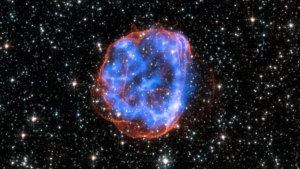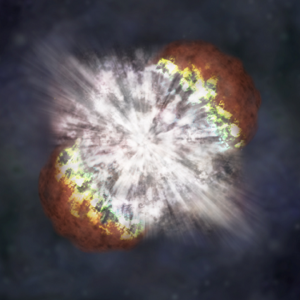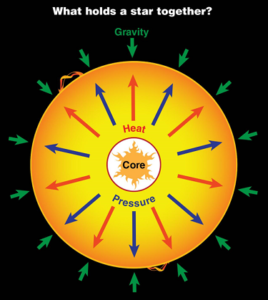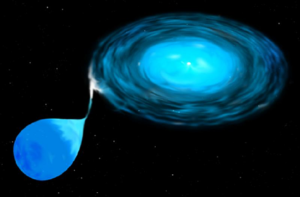Want to catch a supernova? There’s a new app for that.
Relevance
- Preliminary: Science and Technology- Nebula, Asteroid, Supernova.
- GS Paper 3 Science and Technology
- Tags: #upsc #science&technology #cosmos #smartphone #supernova.
Why in the news?
Astronomers have a grandstand view of the dynamic cosmos every time they peer through their telescopes. But now technology has made it possible for any space enthusiast, too, to watch these cosmic events called transients (typically lasting fractions of a second to days or even years), with the help of nothing more than a smartphone.
What Is a Supernova?
- A supernova is the biggest explosion that humans have ever seen. Each blast is the extremely bright, super-powerful explosion of a star.
- A supernova is the biggest explosion that humans have ever seen. Each blast is the extremely bright, super-powerful explosion of a star.
What causes a supernova?
- One type of supernova is caused by the “last hurrah” of a dying massive star. This happens when a star at least five times the mass of our sun goes out with a fantastic bang!
- Massive stars burn huge amounts of nuclear fuel at their cores, or centers. This produces tons of energy, so the center gets very hot. Heat generates pressure, and the pressure created by a star’s nuclear burning also keeps that star from collapsing.
- A star is in balance between two opposite forces. The star’s gravity tries to squeeze the star into the smallest, tightest ball possible. But the nuclear fuel burning in the star’s core creates strong outward pressure. This outward push resists the inward squeeze of gravity.
What holds stars together? It’s a balance of gravity pushing in on the star and heat and pressure pushing outward from the star’s core.
When a massive star runs out of fuel, it cools off. This causes the pressure to drop. Gravity wins out, and the star suddenly collapses. Imagine something one million times the mass of Earth collapsing in 15 seconds! The collapse happens so quickly that it creates enormous shock waves that cause the outer part of the star to explode!
Usually a very dense core is left behind, along with an expanding cloud of hot gas called a nebula. A supernova of a star more than about 10 times the size of our sun may leave behind the densest objects in the universe—black holes.
A second type of supernova can happen in systems where two stars orbit one another and at least one of those stars is an Earth-sized white dwarf. A white dwarf is what’s left after a star the size of our sun has run out of fuel. If one white dwarf collides with another or pulls too much matter from its nearby star, the white dwarf can explode. Kaboom!
How do scientists study supernovas?
- NASA scientists use a number of different types of telescopes to search for and then study supernovas. One example is the NuSTAR (Nuclear Spectroscopic Telescope Array) mission, which uses X-ray vision to investigate the universe.
- NuSTAR is helping scientists observe supernovas and young nebulas to learn more about what happens leading up to, during, and after these spectacular blasts.
Pocket planetaria
- The ubiquitous smartphone is a powerful tool to collect astronomy data not just for the professional astronomer but for the casual stargazer as well.
- The app transforms into a powerful pocket toolkit, its compass and gyro sensors precisely aligning your telescope, or binoculars, with the focus of our observation in the sky.
- The Google Sky Map, for example, is described as “a hand-held planetarium for your Android device” and can locate and identify stars, planets, and nebulae in seconds.
- NASA’s free smartphone app, one of the most popular all-in-one space-focused apps around, does even more: besides helping you find your way around the sky, it also provides images, videos, and exclusive updates on current and scheduled space missions.
The App
- The app uses the open-source Sky Map and adds data daily from the Zwicky Transient Facility (ZTF)’s robotic telescope at the Palomar Observatory in California.
- Palomar is also home to one of the oldest, largest, and most powerful telescopes in the world: the 200-inch Hale reflector.
- The ZTF scans the entire northern sky every two days and uses the data to make large area sky maps that have important applications in tracking near-earth asteroids and studying supernovae.
- The new app, called ZARTH, short for ‘ZTF Augmented Reality Transient Hunter’, is built along the lines of the augmented reality mobile game Pokemon Go.
- Students from the Indian Institutes of Technology at Mandi and Gandhinagar were also involved in developing ZARTH. Once a player catches a transient, ZARTH shares more information about it, earn points, and go on to collect more transients.
- Tracking down transients on ZARTH is easy: the app is loaded daily with transients detected in real-time by the ZTF, an incredible 100,000 every night.
- These include, apart from supernovae, flaring stars (variable stars that flare up for a short while), white dwarf binaries (burnt remains of dead stars that orbit one another and often merge and explode in supernovae), active galactic nuclei, and several other types.
Significance
- ZTF researchers hope that ZARTH will help augment the data on transients as more and more citizen scientists devote their time to it.
- Feedback on these would be the kind that may help improve our machine learning algorithms, especially if users find a certain pattern across multiple such sources.
- It’s introduction in schools and college classrooms has vast potential for incorporating it into STEM and also doing citizen science.
Conclusion
As astronomers increasingly turn to machine-learning and artificial intelligence to study transients, apps like ZARTH will raise the bar for detecting rare and new astronomical events dramatically. With such human-AI collaboration, astronomers and smartphone-toting citizen scientists can look forward to exciting discoveries.
Source: The Hindu







